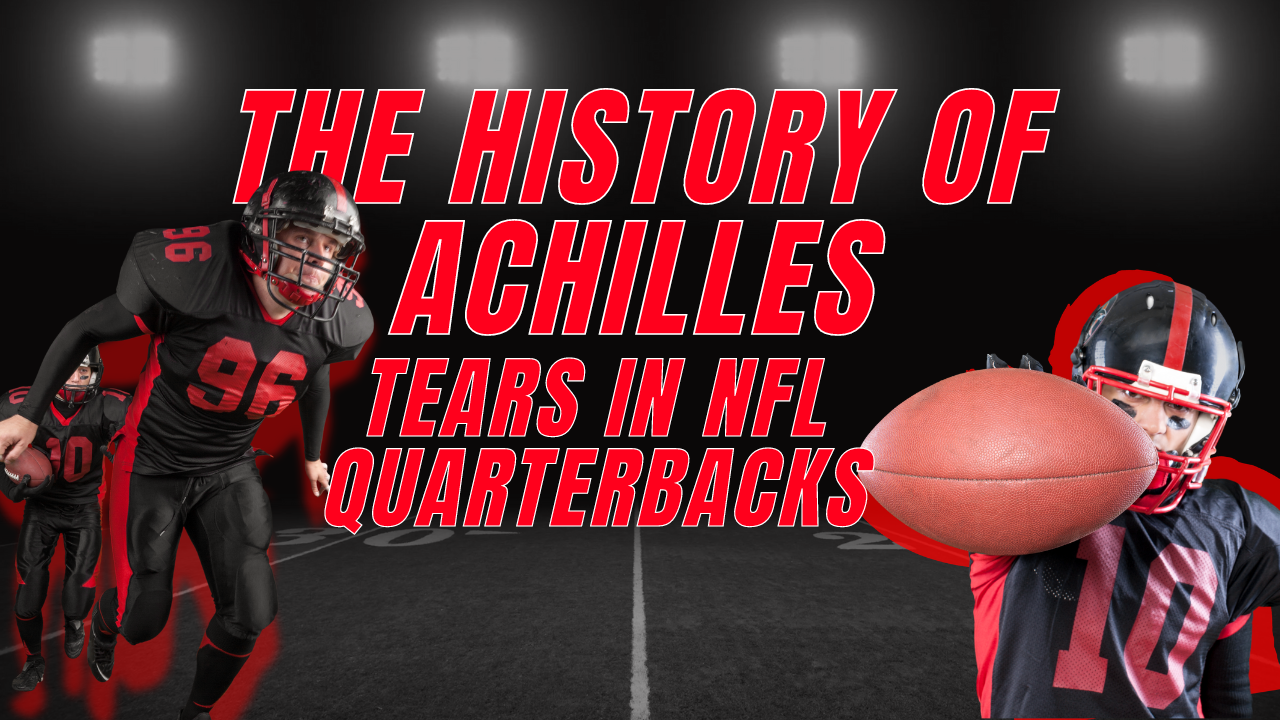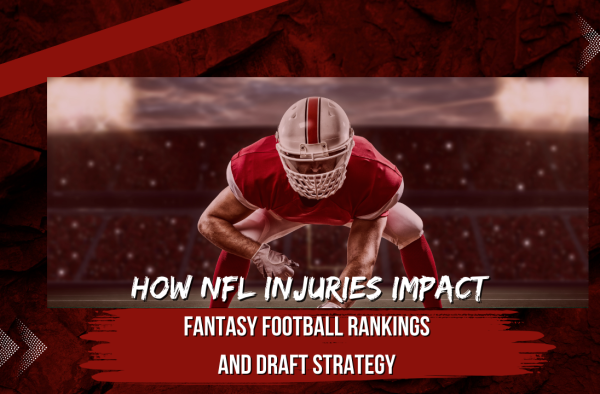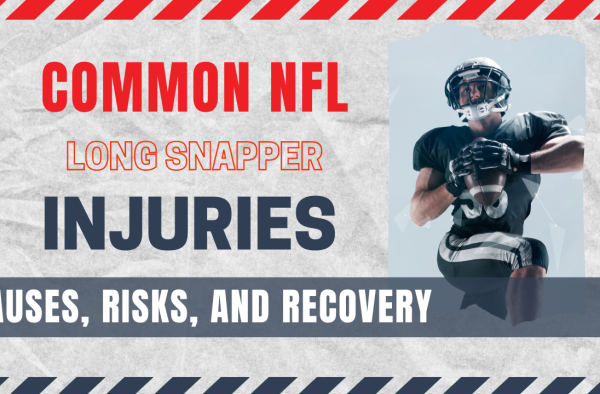Achilles tendon injuries are among the most severe and career-threatening injuries in sports, particularly for NFL quarterbacks. The history of Achilles tears among quarterbacks is a tale of adversity, resilience, and medical advancements. This blog delves into the notable instances of Achilles injuries in NFL quarterbacks, the impact on their careers, and how modern medicine has improved recovery prospects.
Early Instances and Career Impact
The Achilles tendon, connecting the calf muscles to the heel bone, is crucial for walking, running, and jumping. An Achilles tear can be devastating for any athlete, especially a quarterback who relies heavily on mobility and stability. In the early days of the NFL, an Achilles tear often meant the end of a player’s career due to the limited medical technology and rehabilitation methods available.
One of the earliest high-profile cases was that of Dan Marino, the legendary Miami Dolphins quarterback. In 1993, Marino suffered a complete tear of his Achilles tendon, a significant injury that raised doubts about his future in the league. However, Marino’s determination and the medical care he received allowed him to return to the field the following season. While he never fully regained his pre-injury mobility, Marino continued to perform at a high level, proving that recovery was possible even in the early 90s.
The Evolution of Medical Treatment
The treatment and rehabilitation of Achilles tendon injuries have seen significant advancements over the decades. In the 1990s, surgery was the primary option, often followed by a long and grueling rehabilitation process. Despite the advancements, the recovery was uncertain, and many players were unable to return to their pre-injury form.
The turn of the century brought new techniques and better outcomes. The use of minimally invasive surgical methods, improved rehabilitation protocols, and advanced physiotherapy techniques have dramatically enhanced recovery prospects. This evolution is evident in the cases of several quarterbacks who have suffered Achilles injuries in the past two decades.
Notable Cases in the Modern Era
Dan Marino Achilles Injury (1993)
Dan Marino, one of the most iconic quarterbacks in NFL history, faced a career-threatening Achilles injury in October, 1993, while playing for the Miami Dolphins. Marino tore his right Achilles tendon, an injury that required immediate surgical intervention. At the time, medical advancements were not as developed, making his return to the field uncertain. Marino missed the remainder of the season but defied expectations by returning the following year. Although he never fully regained his pre-injury mobility, Marino adapted his game and continued to perform at an elite level, demonstrating remarkable resilience and the importance of effective rehabilitation.
Vinny Testaverde (1999)
Vinny Testaverde, then a quarterback for the New York Jets, ruptured his Achilles tendon in the first game of the 1999 season. At 35, many thought his career was over. However, Testaverde made a remarkable recovery and returned to play in the NFL for several more seasons, demonstrating the improved surgical techniques and rehabilitation protocols of the late 1990s and early 2000s.
Kirk Cousins Achilles Injury ( 2023)
Kirk Cousins, the esteemed quarterback for the Minnesota Vikings, faced a devastating setback in October, 2023, when he tore his right Achilles tendon during Week 8 against the Green Bay Packers. This injury, classified as a Grade 3 Achilles tear, sidelined Cousins for the remainder of the 2023 NFL season. The severity of a Grade 3 tear involves a complete rupture of the tendon, necessitating surgical intervention followed by an extensive rehabilitation process. Cousins’ injury underscored the unpredictable and harsh realities of professional football, where even the most seasoned athletes can face career-threatening situations. His recovery journey will be closely watched as he navigates the challenging path back to the field.
Aaron Rodgers (2023)
One of the most recent and high-profile Achilles injuries occurred to Aaron Rodgers, the veteran quarterback for the New York Jets, in 2023. In a shocking turn of events, Rodgers tore his Achilles tendon just minutes into his debut game with the Jets. At 39 years old, this injury was particularly concerning given his age and the typical recovery timeline for Achilles injuries. Rodgers underwent surgery and immediately started a rigorous rehabilitation process. His recovery is being closely monitored, and there is cautious optimism about his return. Rodgers’ case highlights both the advances in medical treatment and the uncertainties that still exist with such severe injuries.
Medical Advancements and Future Prospects
The treatment of Achilles injuries has progressed significantly, with new surgical techniques, biologics, and rehabilitation protocols leading the way. Techniques such as platelet-rich plasma (PRP) injections and stem cell therapy are becoming more common, aiming to enhance healing and reduce recovery time.
Additionally, the focus on personalized rehabilitation programs tailored to each athlete’s needs has improved outcomes. Modern physiotherapy incorporates advanced technologies like anti-gravity treadmills and aquatic therapy, allowing athletes to regain strength and mobility more effectively.
The Psychological Aspect
Recovery from an Achilles tear is not solely a physical challenge; the psychological aspect is equally crucial. Quarterbacks often face significant mental hurdles, including fear of re-injury and loss of confidence. Modern rehabilitation programs increasingly incorporate psychological support, helping athletes navigate the mental challenges of recovery.
The history of Achilles tears in NFL quarterbacks is a journey through medical advancements and the indomitable spirit of athletes. From the early days when such an injury could end a career, to the modern era where recovery is not only possible but increasingly successful, the evolution is remarkable.
Advancements in surgical techniques, rehabilitation protocols, and preventive care have transformed the landscape. NFL quarterbacks like Dan Marino, Vinny Testaverde, Jake Delhomme, Robert Griffin III, and others have shown that with the right treatment and support, returning to the field is achievable.
As medical science continues to advance, the prospects for recovering from Achilles injuries will only improve, offering hope and opportunities for future generations of quarterbacks facing this challenging injury. The integration of physical and psychological rehabilitation will be key in ensuring that athletes not only recover but thrive post-injury, continuing to inspire fans and aspiring players alike.







